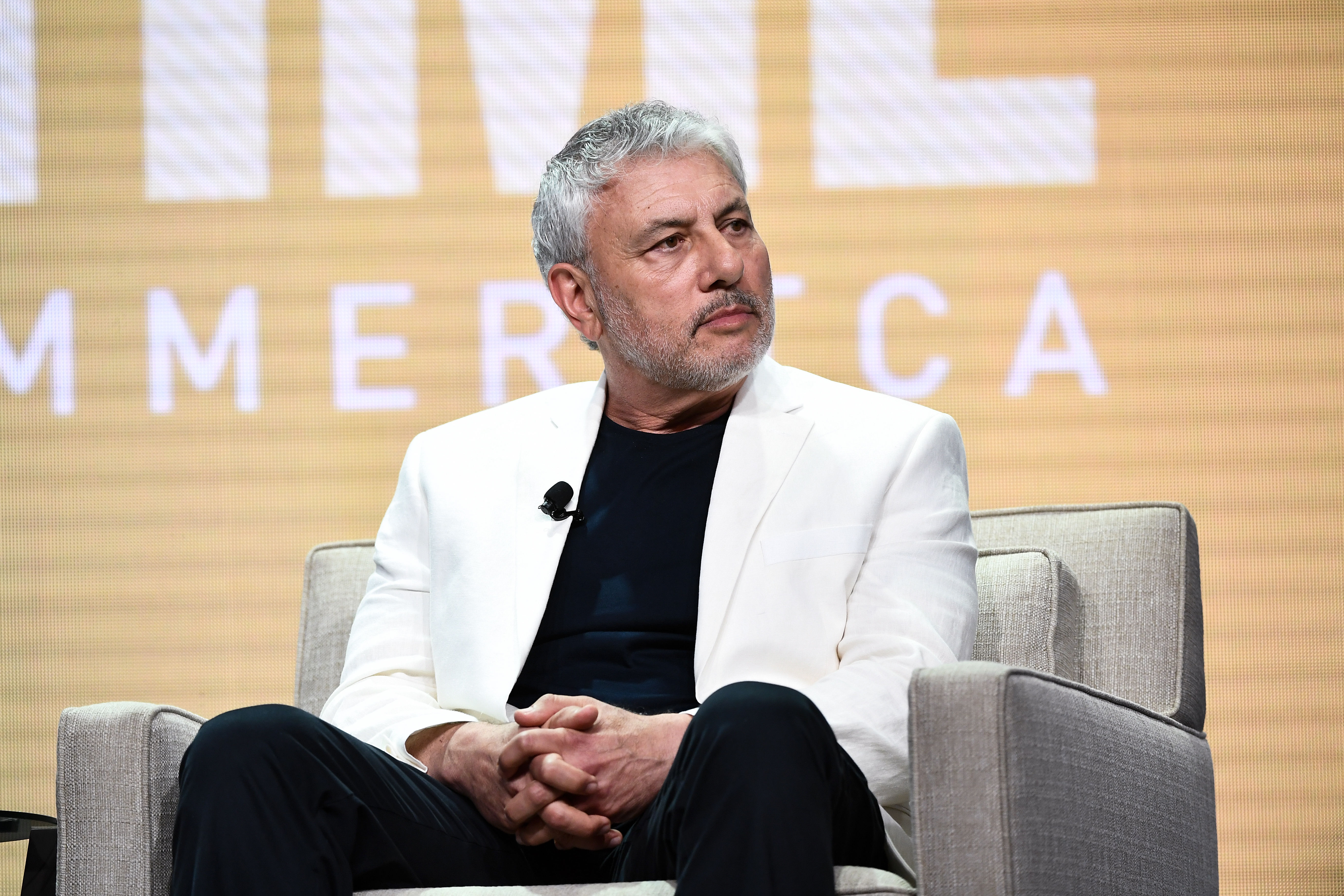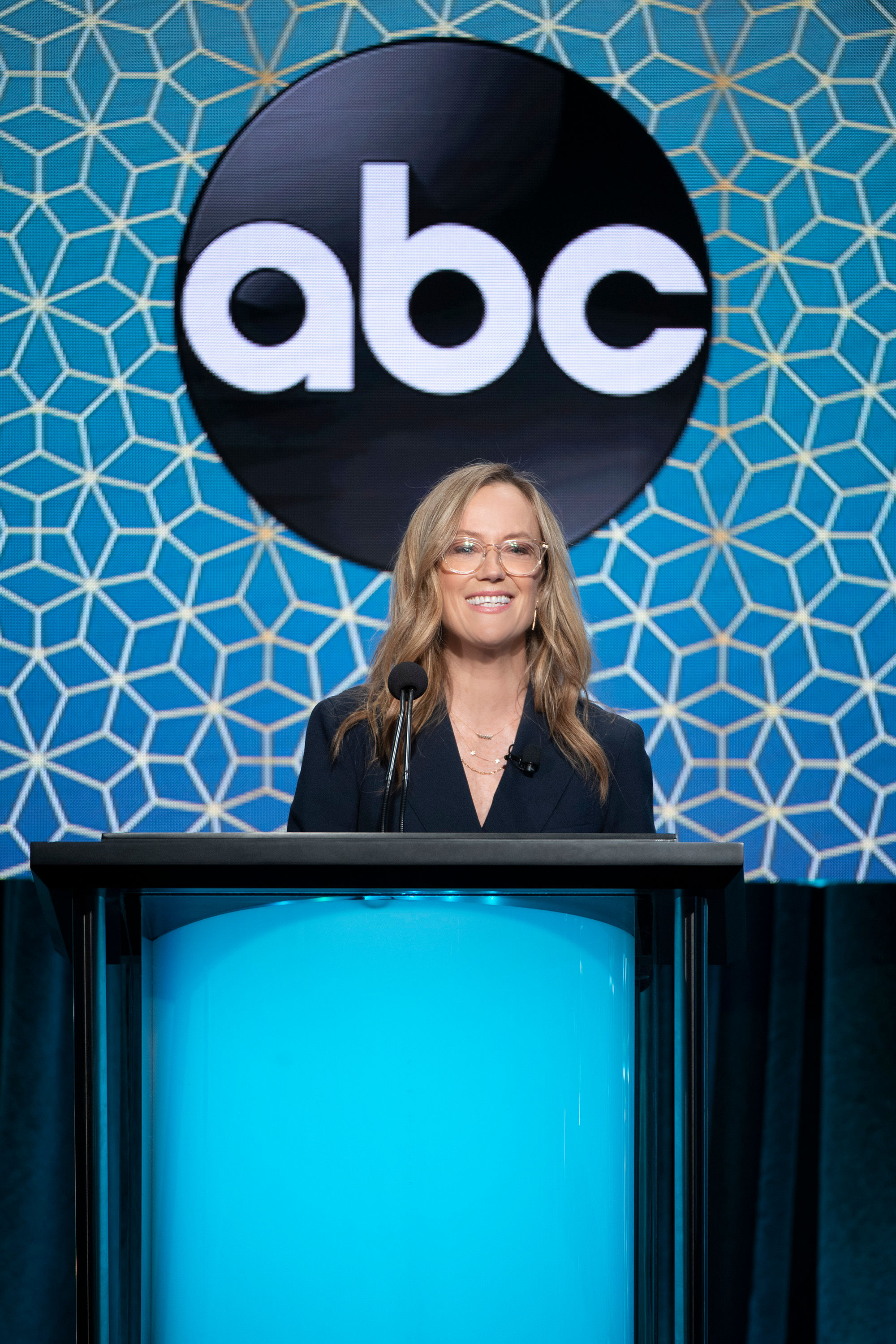Traditional TV Takes Pokes At Streaming Giants
Weekly release offers more potent marketing than all at once, say broadcast, cable execs
While it wasn’t mentioned by name, Netflix was the target of TV network chiefs’ barbs at the Television Critics Association Summer Press Tour in Beverly Hills, California. Executives from both broadcast and cable took shots at the streaming services, saying traditional television offers more marketing might and heftier audiences than newer players might boast of.
While Shonda Rhimes, Ryan Murphy and Kenya Barris have inked massive production deals with Netflix, the network chiefs suggested the tide may just be turning back to traditional TV.
“We think that actually coming back to broadcast television is kind of the cool place to be,” CBS Entertainment senior executive VP of programming Thom Sherman said. “We still get the biggest audiences. We will continue to get the biggest audiences. You end up reaching a much broader swath of people when you put your shows on the air, and you get to tell really great stories to the country.”
To be sure, Netflix, Hulu and Amazon Prime are the place to be for hot producers and performers. When Emmy nominations were revealed last month, HBO had 137, ahead of Netflix’s 117. NBC had 58, Amazon Prime had 47, CBS picked up 44, FX had 32, ABC 26, Hulu 20 and Fox 18.

But the traditional TV executives said their shop can offer stronger marketing. “We don’t just dump a series, send an email and hope it connects,” Gary Levine, Showtime entertainment president, said. “We premiere each of our shows with our entire company focused on launching that series successfully and then let the conversation build over the months that we continue to roll out new episodes.”
Karey Burke, ABC entertainment president, noted the 15 seasons of Grey’s Anatomy, which reaches 350 episodes this coming season. She said ABC’s pitch to producers is to tell stories “that appeal to lots of people and have the capacity to endure over time and be watched by generations.” She mentioned her daughter’s passion for Grey’s.
Burke discussed the marketing of streaming series. “Sometimes they get a billboard on Sunset, and sometimes they disappear into the sunset,” she quipped.
NEXT TV NEWSLETTER
The smarter way to stay on top of the streaming and OTT industry. Sign up below.

The network chiefs also played up their channel’s distinct identity in an era where Netflix offers everything to everyone. “While an ever-increasing pool of streamers spends billions to try to create their brands, we have spent 30-plus years at Showtime carefully building ours,” Levine said. “Our brand is about the consistency of programming. People don’t come to Showtime for one show or to graze and hope they find something. They come because several of their favorite series and many of their favorite characters are on Showtime.”
Net Losses
The broadcasters and cablers may have been taking shots at Netflix because of its lukewarm earnings in mid July, when the company revealed that U.S. subscribers fell in the second quarter. Or perhaps it is because the streamers are canceling more shows, including Netflix spiking supernatural drama The OA after two seasons and Amazon nixing The Romanoffs after one.
But the streaming influence on the television world is undeniable. In his executive session, The CW president Mark Pedowitz spoke of Netflix bringing a wider audience to network shows such as In the Dark and All American. Streaming has meant shorter seasons for some broadcast and cable series, and cable networks at times stacking two new episodes or more in a nod to binge-watching.
At a press tour session for CBS All Access, producer Marc Cherry spoke of “a richer kind of storytelling,” different than what he was accustomed to in his broadcast days.
The notion of a weekly release may seem archaic in the Netflix age, but some broadcasters said it works better for a series. “The conversation continues and continues and continues,” Sherman said of a broadcast release. “When you are on one of the other places, the conversation is very brief, and then people move on to other things until that show might come back.”
Like Sherman, Showtime’s Levine suggested savvy producers are turning back to traditional networks. “It’s interesting to watch as the pendulum is kind of swinging,” he said, “and the creative talent is once again, after being a little dazzled by the new big boys, now really kind of longing for the kind of attention and care that we take with our programming.”
Michael Malone is content director at B+C and Multichannel News. He joined B+C in 2005 and has covered network programming, including entertainment, news and sports on broadcast, cable and streaming; and local broadcast television, including writing the "Local News Close-Up" market profiles. He also hosted the podcasts "Busted Pilot" and "Series Business." His journalism has also appeared in The New York Times, The L.A. Times, The Boston Globe and New York magazine.

